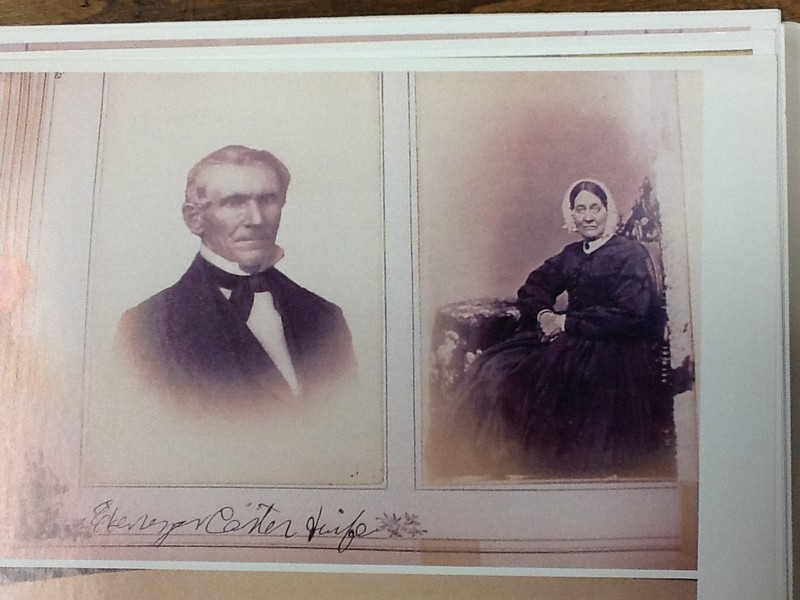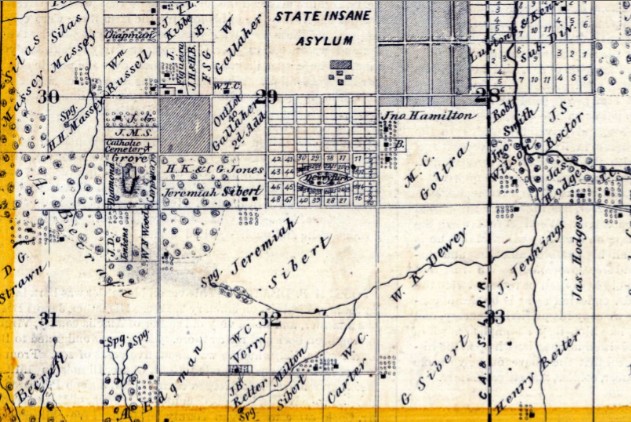Underground Railroad Ebenzer Carter House Site
Introduction
Text-to-speech Audio
Images
Undated photo of Ebenezer and Eliza Carter

1872 Map, William Carter's Farm, T15N-R10W, sec 32.

Backstory and Context
Text-to-speech Audio
The father and son team of Ebenezer and William “Chauncey” Carter worked well together helping runaways with Benjamin Henderson. Ebenezer Carter was very faithful in the anti-slavery movement. His farm was used as a station by the local abolitionists, became a founding member of the Congregational Church in 1833, and was part of the Jacksonville representatives of the 1837 convention of the Illinois Anti-Slavery Society in Alton. Ebenezer came to Jacksonville in 1830 at the age of 33 with his wife Eliza and three children. When he came to Morgan County, he farmer 80 acres of land by 1835, south of Jacksonville (T15N-R10W, sec 32). By 1850 his adult son William Chauncey, age 30, his wife Julia, age 24, and son Samuel was farming with Ebenezer. The Carter’s took in two orphans, 6 year old D. Spannholder and 13 year old D. Rodrigues. Soon after Ebenezer died on May 25, 1860, Eliza may have taken in borders, single mother, Mary Woodward, age 36 and her two daughters, Emma and Mary lived at the Carter farm.
Cite This Entry
Boehlke, Chadwick . "Underground Railroad Ebenzer Carter House Site." Clio: Your Guide to History. December 9, 2018. Accessed August 13, 2025. https://theclio.com/entry/71847
Sources
Charles Eames, Historic Morgan and Classic Jacksonville (Jacksonville:
The Daily Journal Steam Job Printing Office, 1885), pg. 141, 144
Carter, Julia W., The Underground Railroad in Morgan County, The Jacksonville Daily Collection, February 4, 1906, Wilbur H. Siebert Underground Railroad Collection, http://www.ohiomemory.org (access December 18, 2017)

